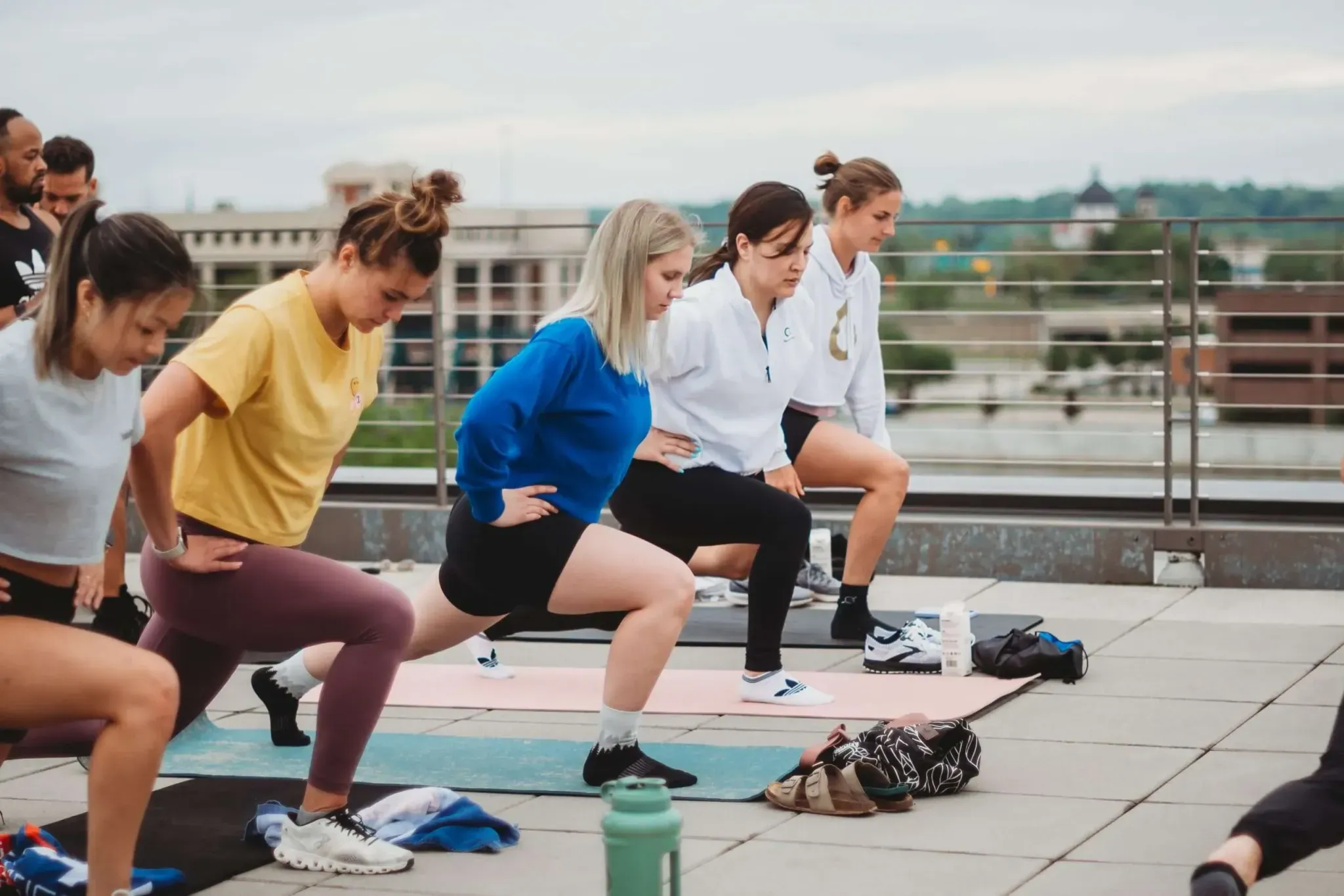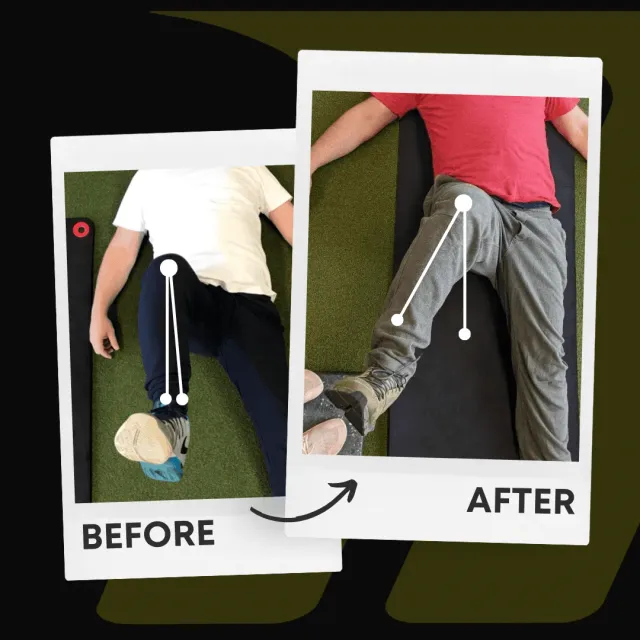Stretching Is Training.
June 16, 2022 | Stretching

I remember back in the day when I used to think stretching was useless. In 2010, I read Lou Schuler and Alwyn Cosgrove’s book, The New Rules of Lifting: Six Basic Moves for Maximum Muscle. It was a pretty stellar book, highlighting the importance of functional movements (e.g., squats, lunges, pushing, etc.) to improve health, performance, and strength.
Stretching was brought up numerous times and was mainly discouraged in the book. The authors suggested it didn’t help improve mobility or reduce pain. They argued that moving (e.g., strength training) was just as effective for improving flexibility and range of motion. However, it’s important to note that this is just one perspective in the fitness community.
Interestingly, a meta-analysis from 2021 decided to dig into this philosophy by comparing strength training to stretching. (1) I’m paraphrasing here, but researchers concluded that stretching and strength training are equally good ways to improve joint range of motion. However, they noted that many studies were incomplete or subpar. More on this later.
Lou and Alwyn also said that stretching before a workout likely inhibited performance. It also didn’t improve flexibility or reduce the chance of injury. Now, that’s not entirely wrong. Several studies show stretching doesn’t work well and may decrease power and performance if you do it before exercise. (2)(3) However, some of these anecdotes and research are taken out of context or are conflated.
But if the research is mixed, and most strength training advocates think stretching is bogus, why do we do it so much?
What Is Stretching?
We referenced this question in a previous article, and I highly recommend you read it. In the meantime, let’s use the always trustworthy, never factually incorrect Wikipedia.
According to Wikipedia,

Stretching is a form of physical exercise in which a specific muscle or tendon (or muscle group) is deliberately flexed or stretched in order to improve the muscle’s felt elasticity and achieve comfortable muscle tone.
There are many stretching exercise variations, like some of these you may have heard of.
-
Dynamic – Bringing joints through their full range of motion. By this definition, doing CARs for your hips, shoulders, and knees is equivalent to dynamic stretching.
-
Proprioceptive Neuromuscular Facilitation (PNF) – PNF is a fancy term for stretching and activating the same tissue. For example, if you’re doing PNF on the hamstring muscles, you would put them into an extended position and then try to fire them up. It’s more nuanced than that, but you get the idea.
-
Static – Holding a stretched position without any active/neurological component; this is also called passive stretching. Think of bending over, dropping your arms toward your toes, hanging your head toward your knees, and letting it all hang loose.
-
Ballistic – Bouncing movements that push your body or joints beyond their normal range of motion.
I agree With The Wikipedia Definition
It does an excellent job of describing the goal while not overdelivering on the benefits of stretching. So often, stretching is used to umbrella all sorts of benefits.
For example, some people think stretching can increase muscle length but can’t. However, stretching can reduce muscle tension at length (that’s the goal).
Stretching does not equal injury prevention. You can mitigate against injuries by having healthier joints (e.g., if your hips have more range of motion, you might fend off unexpected injuries better). However, stretching won’t prevent injuries from happening.
Stretching can enhance the sensory information that connective tissue fields to improve a joint’s range of motion and architecture. In simpler terms, stretching can enhance the quality of a joint’s tissue from the inside out. This translates to a better range of motion, healthier joints, and a stronger body. It’s a powerful tool that, when used correctly, can significantly improve your physical health and performance.
Sounds useful, so why do people negate stretching so much?
Context Matters
Do you do static stretching as part of your warm-up?
Do you do dynamic stretches or ballistic stretching to increase blood flow, reduce the chance of injury, reduce muscle soreness, ease muscle tension, reduce pain, or improve flexibility?
More scientifically, are you trying to increase muscle tissue viscosity and connective tissue plasticity or specifically increase muscle fiber recruitment of a given tissue?
I can’t answer those questions for you, and neither can the Internet, and that’s part of the problem.
If you hold a passive stretch in your calves for thirty seconds right before your workout and think it will help, you’re contributing to the many conversations mentioned above about stretching.
To understand why you need to stretch, you must ask better questions.
What Is The Goal?
Every single person reading this has different goals. Some of you want to exercise to stay healthy, and some want to grow your muscles in your shoulders and legs, like Arnold.
Maybe you stretch for injury prevention or because your hip flexors are tight. Or perhaps your physical therapist told you to stretch.
Regardless of why you do it, there’s a good chance all of you treat stretching the same despite your different goals.
The truth is, you should apply stretching to your programming like you would anything else. By using specificity and progressive overload.
You should use the same training principles for stretching as you would for anything else. You can’t ignore load, duration, intensity, effort, frequency, volume, and velocity. If you do, you’re not treating stretching with the same intent as training. For example, you should progressively increase the duration and intensity of your stretches over time, just as you would with your strength training exercises.
And that’s the real problem. Our industry treats stretching like it’s different from everything else when it’s not.
Stretching Is Training If You Make It That Way
The discussion in this study sums it up perfectly. (5)
The benefits of stretching seem to be individual to the population studied.
In other words, it works when applied appropriately to the right person under the right conditions.
If you have a limited range of motion in a specific joint or lack flexibility (i.e., passive range of motion), then you need the proper protocol. For instance, you might employ eccentrics, loaded-tissue stretching (e.g., PAILs/RAILs), long-duration passive stretches, and more. It will all depend on what you need for the desired goals.
But, you quite literally will not train your way into more range of motion using regular exercise, but there’s a good chance you’ll train around it.
Move With Purpose
Our platform exists to help you fight pain, gain strength, and get results. If that means we need to implement stretching, then we will. The difference is that we will treat it like anything else and give it the time, care, and attention it deserves. We refuse to be like everyone else by only showing you a 30-second hip flexor stretch.
So, if you have achy shoulders, lower back pain, or a lingering injury that won’t go away, we’ll show you a better path forward.
If regular stretching routines are not helping your flexibility, reach out.
Or if you went to a physical therapist only to be sent around the room doing banded exercises like it’s 1985, fire your PT and hire us.
References (Stretching = STR)
-
Strength Training versus STR for Improving Range of Motion: A Systematic Review and Meta-Analysis
-
Time to Move From Mandatory STR We Need to Differentiate “Can I?” From “Do I Have To? ”
-
Acute Effects of Static STR on Muscle Strength and Power: An Attempt to Clarify Previous Caveats
-
CURRENT CONCEPTS IN MUSCLE STR FOR EXERCISE AND REHABILITATION
Written by
Brian Murray, FRA, FRSC
Founder of Motive Training
We’ll teach you how to move with purpose so you can lead a healthy, strong, and pain-free life. Our headquarters are in Austin, TX, but you can work with us online by signing up for KINSTRETCH Online or digging deep into one of our Motive Mobility Blueprints.




